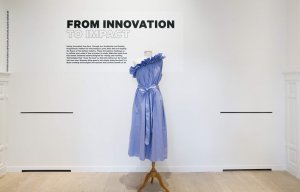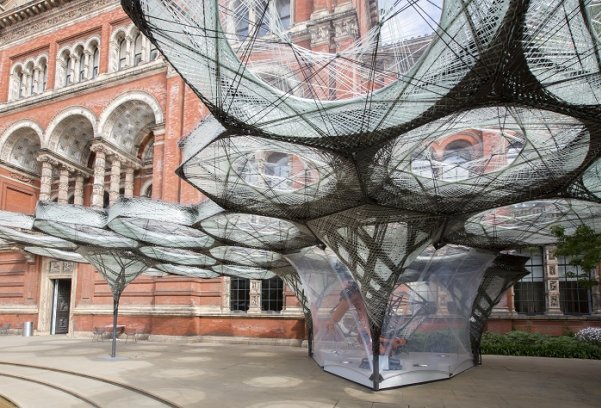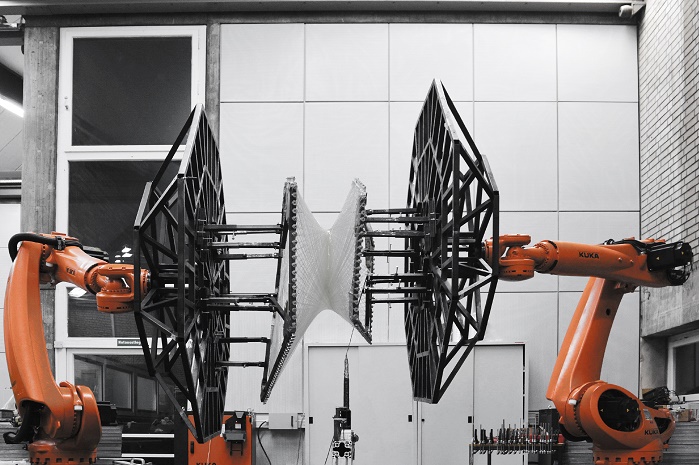
Stella McCartney joins Fashion for Good
Each panel is made from a combination of transparent glass fibre and black carbon fibre.

15th June 2016
Innovation in Textiles
|
London
London’s Victoria & Albert Museum has unveiled an intricate robotically woven and biologically inspired carbon-fibre pavilion in its courtyard.
This newly-commissioned Garden installation by architects and engineers at the University of Stuttgart is inspired by the forewing shells of flying beetles known as elytra and constructed using a novel robotic production process.
The structure, constructed as part of the museum’s new engineering season, is built up of 40 hexagonal components. Each panel is made from a combination of transparent glass fibre and black carbon fibre.
The pavilion was created by experimental German architect Achim Menges with Moritz Dörstelmann, structural engineer Jan Knippers and climate engineer Thomas Auer.

Menges and Knippers are leaders of research institutes at the University of Stuttgart that are pioneering the integration of biomimicry, robotic fabrication and new materials research in architecture. This installation emerges from their ongoing research projects and is their first-ever major commission in the UK.
The pavilion explores the impact of emerging robotic technologies on architectural design, engineering and making.
The structure’s design is inspired by lightweight construction principles found in nature, the filament structures of the forewing shells of flying beetles known as elytra.

Made of glass and carbon fibre, each component of the undulating canopy is produced using an innovative robotic winding technique developed by the designers. Like beetle elytra, the pavilion’s filament structure is both very strong and very light – spanning over 200m2 it weighs less than 2,5 tonnes.
Elytra is a responsive shelter that will grow over the course of the V&A Engineering Season. Sensors in the canopy fibres will collect data on how visitors inhabit the pavilion and monitor the structure’s behaviour, ultimately informing how and where the canopy grows.
During a series of special events as part of the Engineering Season, visitors will have the opportunity to witness the pavilion’s construction live, as new components are fabricated on-site by a Kuka robot. The pavilion will be open until 6 November 2016 at the John Madejski Garden.

Business intelligence for the fibre, textiles and apparel industries: technologies, innovations, markets, investments, trade policy, sourcing, strategy...
Find out more